Beijing Travel Guide – Everything to Know for Visiting Beijing
Learn about the best attractions, activities, and the most helpful tips in our ultimate Beijing Travel Guide to perfect your experience in this great ancient capital in the world!
Beijing, the capital of China, is a renowned ancient capital with over 3000 years of history. It was the ancient capital of the Yuan, Ming, and Qing and several other dynasties, boasting a rich historical and cultural heritage, including the iconic Forbidden City, Great Walls, Temple of Heaven, etc. Also, it is the political, cultural, and economic center of China, endowed with a unique modern urban landscape. As one of the most important travel destinations in China, Beijing is where you can look into the essence of Chinese culture, and the best highlights of ancient and modern China.
More than the rich ancient heritage and modern architectural marvels, a Beijing tour also offers great opportunities to experience the traditional lifestyle in hutong alleys, savor the time-honored cuisines and the world-famous Peking Duck, and admire the treasured Peking Opera… As a main gateway city in China, Beijing’s two gigantic international airports offer direct international flights to numerous destinations around the world, ensuring its easy accessibility for worldwide tourists.
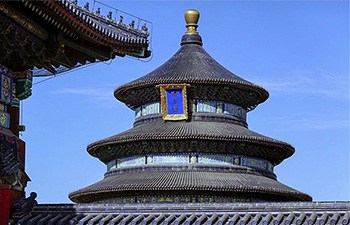
Chinese: 北京 Běijīng
Population (urban area): 21.85M (2023)
Area: 6,336 sq miles
Airport: PEK, PKX
Zip code: 100000
Time Zone: GMT+8
Fast Beijing Facts
- Chinese name: 北京 (Běi Jīng)
- Population:About 21.85 million by 2023
- Language: Mandarin & Beijing Dialect
- Where is Beijing: The capital of China; in northern China; adjacent to Tianjin and is surrounded by Hebei Province.
- Best time to visit: spring (May and early June) and fall (mid-September to early November)
- Time zone: (UTC+8)
- Zip code: 100000
- Major airports in Beijing: Beijing Capital International Airport (PEK), Beijing Daxing International Airport (PKX)
- Climate: Warm temperate semi-humid and semi-arid monsoon climate, featuring hot and rainy summers, cold and dry winters, brief springs and autumns.
Why Visit Beijing?
- The City with the Most World Heritage Sites: Beijing Central Axis was included on the UNESCO World Heritage List in 2024, and now there are eight World Heritage sites in Beijing, making it the city with the most World Heritage sites. The top UNESCO-listed landmarks include the Great Wall, the Forbidden City, the Summer Palace, the Temple of Heaven, etc.
- Rich Traditional Cultural Experiences: The capital city has a rich array of intangible cultural heritage, including traditional arts such as the Peking Opera, crosstalk (xiangsheng) play, and the craftsmanship of cloisonné. In historical Beijing hutongs, you can encounter the conventional Siheyuan courtyard residences and the unique charm of old Beijing’s street culture through residents’ and shopkeepers’ daily lives and businesses.
- Home to Some of the Best Great Wall Sections in China: As one of China’s most iconic symbols, the Great Wall represents a magnificent defensive structure in ancient China and offers insights into China’s ancient politics, military strategies, and culture. And Beijing is where some of the most iconic and best-preserved Great Wall sections are located, including Mutianyu, Badaling, Juyongguan, Jinshanling, Simatai, etc.
- Blends Tradition with Contemporary Flair: As one of the most vibrant modern metropolises in China, Beijing also boasts a wealth of world-class shopping centers, restaurants, and entertainment venues, including Sanlitun, Wanfujing, 798 Art Zone, the Bird’s Nest, the Water Cube, etc.
- Convenient Transportation: Navigating the city is easy, thanks to its extensive network of subways, buses, and taxis. Additionally, Beijing Capital International Airport, the dominant gateway to China, is one of the largest airports in the world, making it convenient to travel to and from the city from numerous key destinations around the globe.
How to Plan a Beijing Tour
Typically, we recommend spending 3-5 days in Beijing to cover its most iconic sites, including the Forbidden City, Great Wall (Mutianyu with both wild and restored sections are top recommended), Summer Palace, Temple of Heaven, and Beijing hutongs.
If travel with kids and families, it’s highly advised to add Beijing Zoo (highlights the Giant Panda House) and Universal Beijing Resort to your trip to Beijing.
With extra days in Beijing, consider an in-depth Beijing tour with a hutong family visit and hiking some wild and scenic Great Wall sections, such as Simatai, Jinshanling, and Gubeikou.
If you are limited in time and just want to have a 1 or 2 days stopover tour in Beijing, Badaling Great Wall, which is nearer to the city center, can be an alternative to the further Mutianyu section. Or, arrange a tour time-efficiently covering its top landmarks.
After a Beijing tour, most tourists choose to extend their China tour to more top destinations, such as Xian, Chengdu, Shanghai, Guilin, Zhangjiajie, etc. As a major transportation hub in the country, Beijing offers frequent direct flights and high-speed trains to these places.
Explore our various Beijing tour packages for more inspiration on how to plan your Beijing tour:
Recommended Beijing tours of different durations:
As a millennium-old capital and the capital of China, Beijing captivates countless visitors worldwide with its rich historical heritage and unique modern charm. Cultural landmarks like the Forbidden City, Temple of Heaven, and Summer Palace offer a deep dive into the essence of ancient Chinese court architecture and the unique royal culture. The world-renowned Great Wall showcases an extensive military defense structure in ancient China and the spectacular natural scenery of the surrounding mountains and plains. Quaint hutongs are rich in memories of local life and will offer visitors an authentic experience of traditional Beijing lifestyles, snacks, and close-knit relationships among neighbors. Read on to discover more of the best tourist attractions in Beijing.
Top Things to Do in Beijing
Besides visiting the iconic landmarks and attractions in Beijing, the city also offers a variety of cultural activities to immerse yourself in the local experience.
Taste Beijing Snacks
Beijing is home to countless century-old restaurants. Besides the famous dishes like Peking Duck, and instant boil mutton (aka Mongolian firepot), the city also boasts a wide array of traditional snacks and exquisite dishes originating from the imperial kitchens. During your trip to Beijing, you can either walk into the century-old restaurants or venture deep into a hutong alley to savor the authentic Beijing flavors.
Related reading: The 15 Most Popular Beijing Restaurants
Watch a Beijing Opera Performance
Beijing Opera is often referred to as a national treasure in China. As one of the most iconic theatrical forms and the world’s cultural heritage, it combines elements of literature, music, visual arts, dance, martial arts, and acrobatics, serving as a vivid embodiment of the depth and beauty of Chinese artistic expression. Li Yuan Theater is the top place to enjoy Peking Opera.
Discover Traditional Beijing Life in Hutongs
Contrasting sharply with the grand imperial palaces and modern urban landscape, the traditional hutongs of old Beijing preserve the myriad aspects of life for local residents over the centuries. A hutong tour is now an essential part of any Beijing trip, offering a glimpse into the authentic daily life of ordinary citizens. You can take a rickshaw through these narrow alleys or visit a hutong family to delve into the life and layout inside the quadrangle dwelling.
Read more about:

What to Eat in Beijing
Beijing Roast Duck
Roast duck is a famous Beijing dish with a world reputation. It originated in the southern and northern dynasties of China and was an imperial food at that time. Beijing roast duck is made of high-quality meat duck and roasted over charcoal fire with fruit wood. It has a golden look, fat but not greasy meat and tender with a crispy crust. People usually eat duck with other two types food: lotus leaf shaped pancake and hollowed sesame pancakes. People could also add some sweet bean sauce, green onion, cucumber strips and roast duck slice or garlic paste, soy sauce, cucumber strips and roast duck slice on the pancakes, then wrap the pancake and eat it.
You may like The 15 Most Popular Beijing Restaurants
Shredded Pork with Sweet Bean Sauce
Pork shreds with sweet bean sauce is a well-known dish, which is one of the classic representative dishes of Beijing cuisine. Lean meat of pork is the main ingredient, and supplements are sweet bean sauce, scallion, ginger and other condiments. It is cooked with the special cooking techniques of north China. The dish is very popular due to the moderate and unique flavor, and Chinese people usually eat it with pancake or rice.
Noodles with soybean paste
Noodles with soybean paste is a traditional Chinese style pasta, which is popular in Beijing, Hebei, Tianjin and other places. It is made by fried soybean sauce, noodles and different cut vegetable such as cucumber, Chinese toon, bean sprouts, green beans. People can also add condiment such as chili, vinegar to adapt to personal appetite.
Sugar-coated haws on stick
Sugar-coated haws on a stick is a traditional Chinese snack, which is made by the wild fruit with bamboo stick into a string and dipped in maltose syrup until cooled. It is the common snack of northern cities of China in winter, which tastes refreshing, sweet yet tart. It also has many the functions like whetting appetite, nourishing skin, eliminating the fatigue, clearing heat.
Copper pot shabushabu
Copper pot shabushabu is an authentic Beijing dish with mutton as the main ingredient. The meat must be fresh, and people boil meat while boil many kinds of vegetables such as Chinese cabbage, coriander, spinach, tofu, silk noodles at the same time.
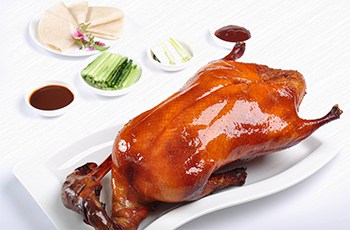
Beijing Visa-free Transit Policy
In order to make a full implementation of the “One Belt And One Road” and the coordinated development strategy of Beijing-Tianjin-Hebei, and build a more convenient entry and exit environment, the State Council approved the 144-hour visa-free transit policy to allow foreigners from 53 countries to stay in Beijing, Tianjin and Hebei province no more than 144 hours (six days). Visas are not required for people who come from the 53 countries hold valid international travel documents, and connect international flight tickets with confirmed dates and seats to a third country (region) within 144 hours.
Beijing Transportation: How to Get to & Travel around
How to Get to Beijing?
Beijing is the major gateway city to enter China, offering frequent international flights to/from various destinations around the world. That’s why most tourists start their China tours from Beijing. There are two airports in Beijing: Beijing Capital International Airport, and Beijing Daxing International Airport.
Beijing Capital International Airport is about 25.35 kilometers from the city center. As one of the busiest airports in the world, it offers about 1240 flights and 176 international flights to connect Beijing with various destinations in Asia, Europe, North America, etc.
Beijing Daxing International Airport is about 40 kilometers from the city center. It offers 216 flight routes connecting Beijing with 25 countries in Europe, Asia, and the Middle East.
Get to Beijing by train: To get to Beijing from domestic cities, high-speed trains and bullet trains are popular options besides flights. Currently, there are more than 10 train stations in Beijing. Direct high-speed train routes are available from most major cities to Beijing.
Related reading: How to Travel from Beijing to Xian?
How to Travel around Beijing?
Beijing has a very developed and convenient public transportation system. Subway is the most convenient option to travel around Beijing considering its busy traffic. Buses and Taxis are also the primary means of city transport, but you’d better avoid the rush hours in the morning and evening.
Subway
The subway in Beijing is the most convenient transportation which provides several line routes and connects famous tourist attractions.
- Subway Line 1: Pingguoyuan(5:10-22:55)-Sihuidong(5:05-23:15) whole stations:23
Famous stations: Tiananmen Station, Wangfujing Station
- Subway Line 2:Jishuitan(-22:45)-Xizhimen(5:34-22:42) whole stations:18
Famous stations: Qianmen Station, Beijing Railway Station
- Subway Line 4: Anheqiao Bei(5:00-22:20)-Tiangongyuan(05:30-22:38) whole stations:35
Famous stations: Xidan commercial district station, Beijing Zoo station
- Subway Line 5: Songjiazhuang(5:19-23:10)-Tiantongyuaun Bei(5:00-22:48) whole stations:23
Famous stations: Temple of Heaven East Gate(Tiantan Dongmen) station, Lama Temple(Yonghe Palace) station
- Subway Line 6: Haidian wuluju(5:23-22:40)-Lucheng(5:50-22:49) Whole stations: 26
Famous stations: Beihai Bei Station, Nanluoguxiang Station
- Subway Line 7: Beijing West Railway Station(5:30-23:15)-Jiaohuachang(5:10-22:25) Whole stations:21
Famous stations: Beijing West Railway Station
- Subway Line 8: Zhuxinzhuang(5:10-22:05)-Nanluoguxiang(5:30-23:00) Whole stations:17
Famous stations: Beijing Olympic Park Station,Olympic Sports Center Station,Gulou Street Station, Shichahai Station, Nanluoguxiang Station
- Subway Line 9: Guogongzhuang(5:20-22:40)-National Library(5:59-23:19)
Famous stations: Beijing West Railway Station, Military Museum Station
- Subway Line 10: Bagou(4:54-22:27)-Huoqiying(4:52-0:22) Whole stations:45
Famous stations: Guomao Station, Panjiayuan Station
- Subway Line 13: Xizhimen(5:35-22:42)-Dongzhimen(5:35-22:42) Whole stations:16
Famous stations: Wudaokou Station
- SubwayLine 14:
East Part: Beijing South Railway Station(5:30-22:40)-Shangezhuang(5:30-22:30) Whole stations:19
Famous stations: Beijing South Railway Station, Wangjing Station
West Part: Zhangguozhuang(5:30-22:10)-Xiju(5:45-22:10) Whole stations: 7
Famous station: Beijing Garden Expo Station
- Subway Line 15: Fengbai(5:30-22:11)-Qinghuadonglu Xikou(5:42-23:15) Whole stations:15
Famous stations: Wangjing Station, Beijing Olympic Park Station
- Airport Line: Dongzhimen(6:00-22:30)-T2 Terminal(6:35-23:10)
Dongzhimen-Sanyuanqiao-T3 Terminal-T2 Terminal
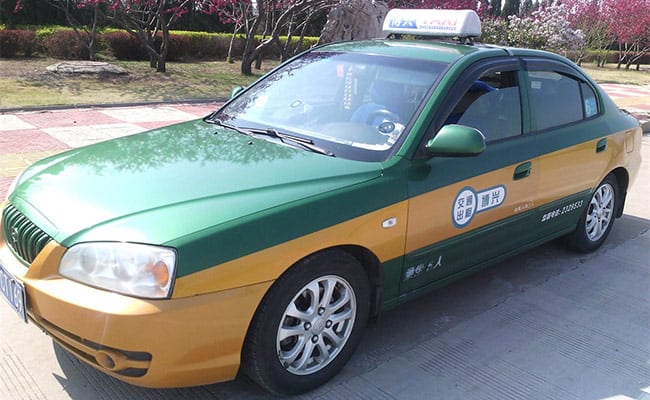 Cab
Cab
The Cab service in Beijing is professional, and the cabs are available every time and everywhere in Beijing City. If you want to take a cab to travel in Beijing, it is wise for you to avoid the rush hour (7:00-9:00 in the morning and 17:00-20:00 in the evening) to save some time and fee.
The flag-down fare of cab in Beijing is CNY 13 for first 3 kilometers(2 miles), and when the mileage exceeds 3 kilometers, the fee is CNY 2.3 per kilometer(5:00-22:00) and CNY 2.76 per kilometer (23:00-5:00). If it’s necessary to drive on the highway or toll road, the toll should be paid.
Note: Sometimes the cab fares are generally rounded. For example, if it shows CNY 19.8, you need to pay CNY 20.

Beijing has a typical northern temperate monsoon climate, which is cold and dry in winter and hot and rainy in summer. July is considered the hottest and wettest month of the year, with the average temperature hovering around 27.3°C and seeing about 13.9 rainy days. January is the coldest month in Beijing when the minimum temperatures fall to nearly -8ºC (17.6ºF).
The city will greet tourists with different landscapes and cultural experiences in different seasons. While, typically, the period between September and October serves as the best time to visit Beijing when tourists can enjoy comfortable weather, good air condition, and stunning autumn sceneries. The months from March to May in spring are also great times when the weather is comfortable, and many parks and gardens are filled with blooming flowers.
Where to Stay in Beijing
Five-star Hotel
Although the accommodation fee of each five-star hotel is higher than others, it has a convenient location and transportation, advanced facilities, great accommodation environment and professional services. So, travelers who choose to live in five-star will definitely have a better and more comfortable travel experience.
Hilton Beijing Wangfujing
Hilton Beijing Wangfujing is located in the famous Wangfujing Street and tourists can walk to the Forbidden City, Tiananmen Square, and so on from the hotel. It is not far from China Beijing World Towers and Fuxing Gate (Fuxing Men) business district, which occupies an excellent position in the commercial and cultural center of the city.
The hotel offers a fully equipped fitness center, an indoor swimming pool, and a business center where consumers can enjoy relaxing massage and body care. The hotel has three restaurants and two bars that provides fine dining and wine to guests.
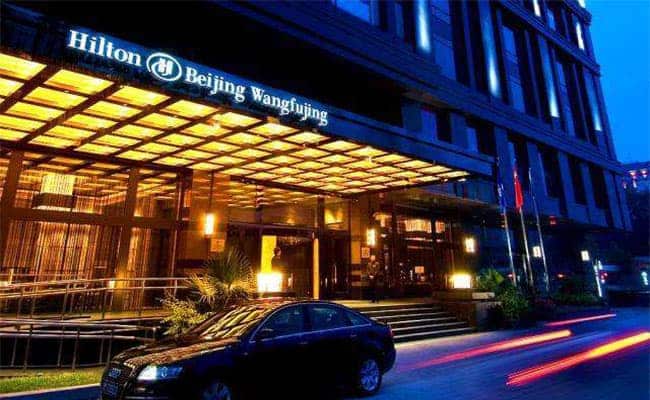
Four-star Hotel
Novotel Beijing Xinqiao
Novotel Beijing Xinqiao is located in the city center, facing Wangfujing pedestrian street and Oriental Plaza in the north and New World Shopping Center in the south, which is also adjacent to Tongren Hospital and Beijing railway station. The jewelry and silk markets are within walking distance and it is also near Tiananmen square and the Forbidden City. As the Chongwenmen subway station is near the hotel, it is convenient to access the Beijing Railway Station.
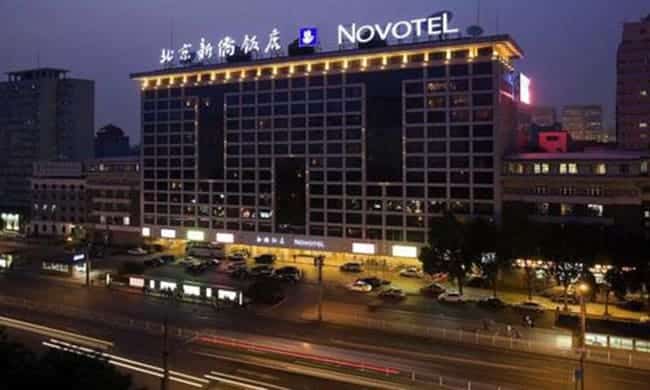
Sunworld Hotel
Sunworld Hotel, located at the intersection of Wangfujing and Dengshikou Street, is a popular hotel with convenient transportation and complete service facilities. The restaurant of the hotel provides a great number of Chinese and Western delicacies and don’t forget to taste the traditional shabu-shabu hot pot.
Three-star Hotel
King Parkview Hotel
King Parkview Hotel, located in the center of Beijing, owns an independent courtyard and preserves precious building remains of the Qianlong period of the Qing Dynasty and the mathematics department building of the Imperial University of Peking (the former name of Peking University). The hotel is surrounded by the Forbidden City, Jingshan Park, Beihai Park, Shichahai, Huangchenggen Relics Park, Bell Tower Drum Tower, and so on.
Dong Fang Hotel
Dong Fang Hotel is a theme hotel of the republic of China, which is composed of three buildings of different periods in 1918, 1953 and 1985. It is adjacent to Liulichang ancient culture street, Ji xiaolan’s former residence, Qianmen commercial street, Temple of Heaven Park, Taoranting Park and other famous cultural tourist attractions. It is about 8 minutes’ drive away to Tiananmen Square and the Forbidden City.
Hostel
Shichahai Sandalwood Boutique Hotel
Shichahai Sandalwood Boutique Hotel is located in Houhai scenic area, which is one of the few traditional courtyard houses in Shichahai area. The hotel has 10 guest rooms, which are furnished with precious rosewood furniture. The famous Houhai area, Beihai Bei Subway Station (Line 6), and Pinganli Subway Station (Line 4) are within 15 15-minute walk distance. It is also convenient to reach the other famous tourist attractions such as Beihai Park, Nanluoguxiang, Houhai Bar Street, Tiananmen Square, the Forbidden City, etc.









